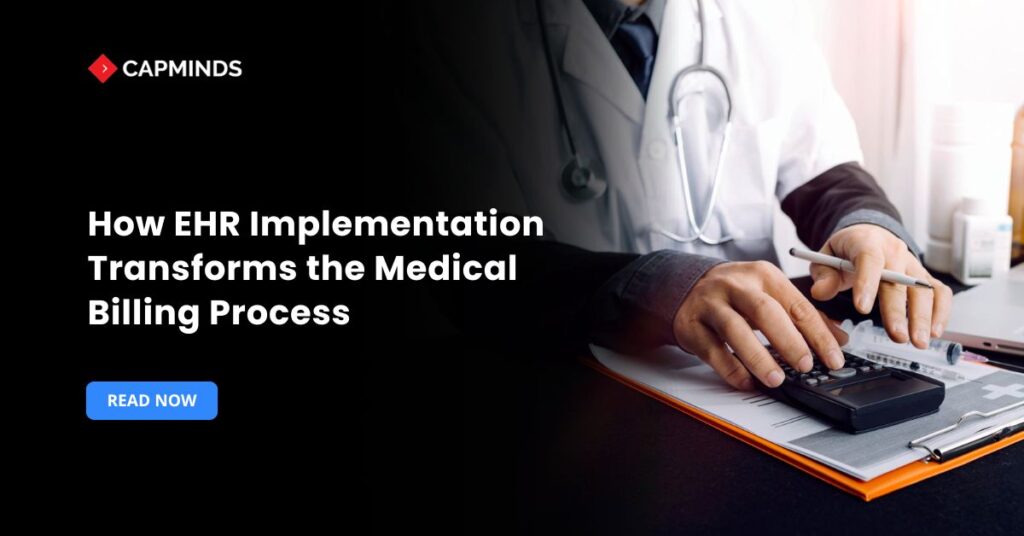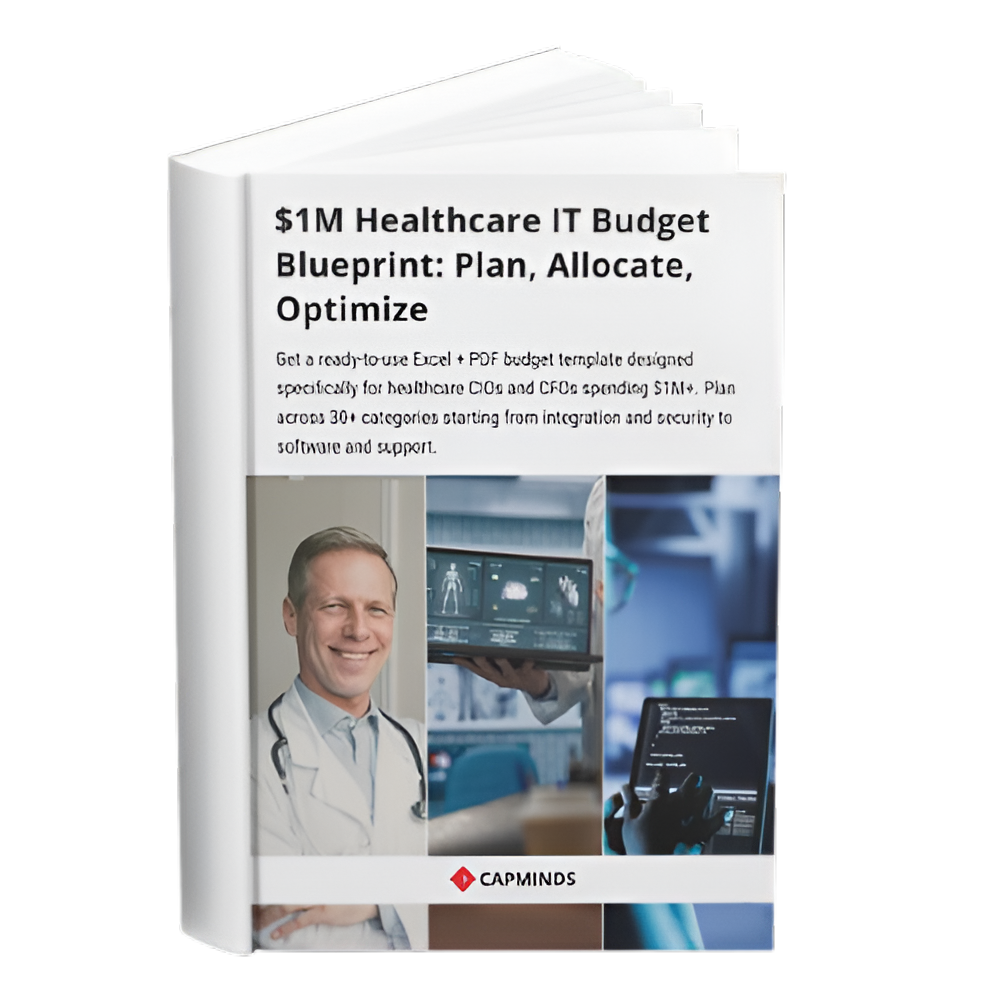How EHR Implementation Transforms the Medical Billing Process
Medical billing serves as the foundation for any healthcare facility. However, the method is not easy. Front desk staff manage insurance information and patient demographics. Coders transform clinical services into CPT/HCPCS and ICD-10 codes. While finance teams look into denials and unpaid amounts, billers submit claims to many payers. Accuracy and speed are necessary at all stages, however, the system routinely lags.
In 2024, 11.81 percent of medical claims were first refused. Even though they eventually approve more than 90% of claims, payers frequently use denials to delay payments. As a result of these recurrent denials, hospitals and clinics face severe cash flow challenges, as well as an increase in AR.
As payment periods lengthen, financial pressure increases. This has an impact not only on revenue but also on the patient experience, since delayed billing can cause uncertainty and distrust.
To remain financially healthy and trustworthy, healthcare providers must modernize their billing operations. Automation, real-time analytics, and improved denial management are no more optional; they are required to provide efficient operations and ongoing patient care. EHR integration with medical billing solution and revenue‑cycle software offers a proven way forward.
Core features of EHR‑Enabled Medical Billing Solution
Medical‑billing EHR platforms include several capabilities that transform revenue‑cycle tasks:
| Feature | Evidence |
| Automation of documentation and claims | EHRs for billing reduce errors and manual labor by automating clinical documentation and claim submission. |
| Claims scrubbing | Built‑in claim scrubbing audits and corrects coding errors before submission, lowering denial rates. |
| Real‑time insurance verification | In order to verify coverage and avoid services being refused because of inaccurate insurance information, EHRs conduct real-time eligibility checks. |
| Integrated coding and documentation | EHR platforms sync with up‑to‑date coding databases and provide templates, ensuring accurate codes and compliant documentation. |
| Revenue‑cycle management | Staff can keep an eye on claims and receivables thanks to integrated systems, which offer a comprehensive picture of financial health from claim submission to final payment. |
How EHR Integration Improves Revenue‑Cycle Performance
In addition to digitizing current processes, integrating EHRs with billing software increases accuracy, expedites cash flow, and generates data-driven insights. The evidence below highlights how EHR implementation transforms financial performance.
1. Error reduction through automation
Manual data entry is prone to mistakes. An integrated EHR automatically syncs patient records, codes, and insurance details, reducing inaccuracies and administrative workload. Integrating EHRs with RCM platforms cuts billing workloads by up to 40 % and reduces processing time by 25–40 %.
2. Higher first‑pass acceptance
Providers using EHR‑RCM integration report 95–98 % claim acceptance rates, compared with the industry average of 85–90 %. This improvement to automated data validation and predictive analytics flags denial risks before submission.
3. Reduced denials and faster reimbursement
Integrating EHR with RCM can reduce claim denials by up to 40 % and shorten payment cycles to 24–48 hours for clean claims. Organizations are achieving a 28 % decrease in denials and a 22 % reduction in operational costs within 90 days. Intelligent automation and claim‑scrubbing capabilities enable providers to submit claims more quickly and with greater accuracy.
4. Lower operational expenses
EHR adoption led to a 74.6 % reduction in monthly transcription costs and a 26.6 % reduction in paper consumption. The same review identified studies reporting increased revenues and reimbursements after EHR implementation.
5. Avoiding lost revenue and denial expenses
Fighting claim denials costs providers $43.84 per claim. By preventing denials through automated eligibility checks and scrubbing, integrated EHR systems save practices significant money and help meet recommended accounts receivable targets (50 days or less). Interoperable EHRs could save U.S. medical practices $30–77.8 billion annually.
6. Better business insights
Integrated EHR‑billing systems provide dashboards and analytics that track revenue cycle KPIs. These include medical‑coding accuracy (>95 %), first‑pass resolution rates, denial volumes, and days in accounts receivable. Integrated reporting tools help providers forecast revenue, explore trends, and decrease costs.
7. Compliance and security
EHR-integrated billing systems aid in fulfilling legal obligations. They provide current code libraries, audit trails to record modifications, and billing software that complies with HIPAA.
Automated compliance monitoring facilitates more robust payer negotiations and streamlines audit preparation. EHR systems protect patient data and provider reputation by offering strong security features and guaranteeing adherence to healthcare regulations.
8. Enhanced patient experience and collections
Physicians can customize care plans and make better decisions when they have access to real-time clinical data. Patients may view billing statements, payment options, and medical information all in one location via unified patient portals, which encourages openness and expedites collections.
Providers can send electronic statements and collect payments through mobile devices thanks to integrated payment functionality, which lowers patient accounts receivable and enhances cash flow.
The Role of Artificial Intelligence in EHR‑Driven Billing
Artificial intelligence extends the power of integrated EHRs by automating repetitive tasks, improving coding accuracy, and predicting denial risks.
- Automated coding and accuracy. With over 95% accuracy, machine-learning algorithms trained on millions of clinical interactions can examine paperwork and recommend appropriate codes. The scarcity of certified programmers is addressed by these AI-powered coding tools, which also standardize billing for big businesses.
- Predictive analytics. Embedded analytics anticipate and prevent revenue‑cycle disruptions. Predictive tool providers indicate 40–50% decreases in old accounts receivable and 25–35% increases in first-pass claim acceptance. Up to 70% of typical billing duties can be handled by AI solutions, which can also lower rejection rates by up to 40%.
- Denial prevention and workload reduction. By identifying missing authorizations or contradictory data, built-in analytics can reduce denial rates by up to 40% and billing workloads by up to 40%. Prior authorization, eligibility verification, and payment posting can all be completed by automated procedures with accuracy rates higher than 98%.
AI‑enabled EHR systems thus support revenue managers in making informed decisions, allocating resources effectively, and focusing staff on high‑value tasks.
Challenges of EHR and Billing Integration
Despite the clear benefits, EHR integration projects are complex. Common challenges include:
- System compatibility and interoperability. Many practices use outdated or proprietary software that is difficult to integrate. Poor interoperability between systems is are key barrier to adoption.
- Data synchronization issues. Payment delays and inaccurate billing might result from irregular or postponed data updates. Real-time syncing of patient information is essential to avoid financial bottlenecks.
- Security and privacy concerns. Concerns about illegal access to private health data are increased by system integration. Concerns over data privacy were voiced by both patients and professionals, and strong encryption and role-based access controls are essential.
- Training and adoption. Employees may not receive enough training or oppose change. Poor technical assistance and inadequate user training are cited in studies as the main obstacles. Thorough training enables employees to utilize new skills effectively.
- Cost considerations. Large upfront expenditures for software licenses, implementation services, and upkeep may be necessary for integrating EHRs. However, these expenses are frequently outweighed by long-term efficiency advantages.
Transform Your Healthcare Operations with CapMinds’ EHR Integration & Billing Services
You’ve seen how EHR implementation changes the billing game. But technology alone isn’t enough, the right partner matters. That’s where CapMinds comes in.
We help you turn your EHR investment into measurable financial results by modernizing systems, automating workflows, and eliminating billing inefficiencies through advanced EHR and RCM integration.
Our service-driven approach ensures your technology truly works for your team, not against it.
At CapMinds, we specialize in:
- EHR Integration Services — Connect your EHR with labs, pharmacies, and external systems for real-time data flow.
- EHR Integration with Medical Billing Solutions — Streamline claims, reduce denials, and accelerate reimbursements.
- Revenue Cycle Management (RCM) Services — Achieve higher first-pass acceptance and faster payments.
- AI-Driven Billing Automation — Reduce manual errors and enhance coding accuracy with predictive analytics.
Partner with CapMinds to transform your billing performance, boost compliance, and deliver exceptional patient and provider experiences, all powered by integrated digital health technology.
Ready to optimize your EHR and billing system? Connect with CapMinds today.




